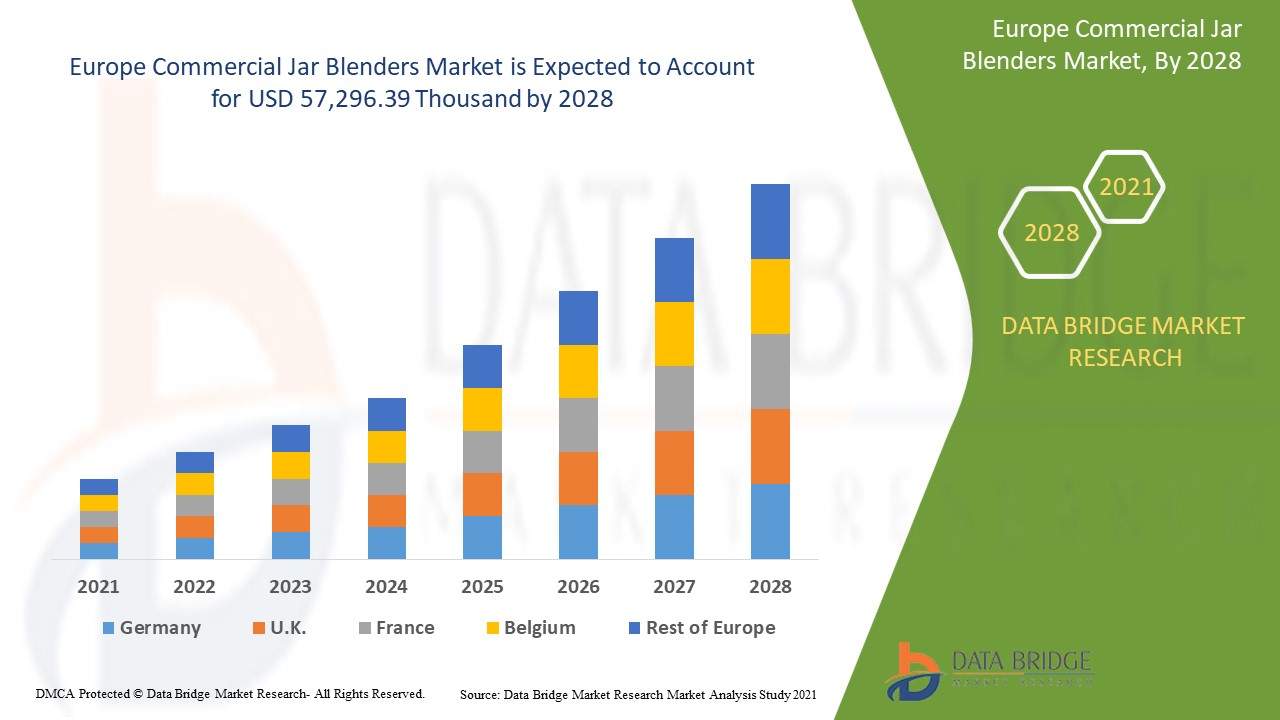The Europe commercial jar blenders market is undergoing a notable transformation, propelled by technological innovations, increasing demand from the foodservice industry, and evolving consumer preferences. These blenders—widely used in restaurants, cafes, smoothie bars, and catering services—are crucial kitchen appliances for preparing a variety of blended foods and beverages. As the food and beverage industry in Europe continues to expand and diversify, the demand for high-performance commercial blenders is surging.
This article delves into the current dynamics, growth drivers, trends, and competitive landscape shaping the commercial jar blenders market across Europe.
Market Overview
The commercial jar blenders market in Europe is poised for consistent growth between 2024 and 2030, driven by the burgeoning foodservice sector, rising health consciousness, and innovations in blender technology. These machines are no longer limited to basic functions; modern commercial blenders feature advanced controls, high-speed motors, multiple preset modes, and enhanced durability, catering to the professional demands of food and beverage businesses.
Germany, the UK, France, Italy, and Spain are leading contributors to the market owing to their strong hospitality sectors and the growing number of commercial food and beverage outlets.
Key Growth Drivers
1. Expanding Foodservice and Hospitality Sector
One of the primary drivers of market growth is the continued expansion of the foodservice and hospitality industries across Europe. The increase in fast-casual restaurants, cafes, and smoothie bars—especially in urban areas—has created substantial demand for high-capacity, durable blenders capable of handling heavy daily usage.
Moreover, the tourism industry in countries like France, Italy, and Spain fuels the demand for commercial kitchens equipped with robust food preparation appliances.
2. Health and Wellness Trends
Consumer interest in healthy eating has pushed restaurants and cafes to diversify their offerings with smoothies, protein shakes, vegetable purees, and other blended beverages. This health-focused trend has created a market for blenders that can process a wide variety of fruits, vegetables, nuts, and ice with ease, promoting the adoption of powerful commercial jar blenders.
3. Technological Innovations
Technological advancements in commercial blenders—such as touchscreens, noise reduction, pre-programmed settings, Bluetooth connectivity, and self-cleaning functions—are contributing to higher adoption rates. These features improve efficiency in commercial kitchens and reduce operational downtime, enhancing productivity.
4. Rise of Specialty and Vegan Restaurants
The growing number of plant-based and specialty restaurants across Europe is another factor stimulating market growth. These establishments heavily rely on blenders for creating plant-based sauces, nut milks, vegan desserts, and soups, making high-performance blenders a necessity in their kitchens.
Market Segmentation
By Product Type:
-
Countertop Blenders: Most common in commercial kitchens for large batches.
-
Immersion Blenders: Used for blending soups and sauces directly in pots.
-
High-Performance Blenders: Designed for demanding operations and prolonged use.
By Jar Material:
-
Plastic Jars: Lightweight and economical.
-
Glass Jars: Durable and stain-resistant but heavier.
-
Stainless Steel Jars: Popular in high-end commercial settings for durability and hygiene.
By End User:
-
Restaurants
-
Cafes & Coffee Shops
-
Juice & Smoothie Bars
-
Catering Services
-
Hotels & Resorts
Competitive Landscape
The European commercial jar blenders market is moderately consolidated, with several key players holding significant market shares. Some prominent companies include:
-
Vitamix Corporation
-
Blendtec
-
Hamilton Beach Brands Inc.
-
Waring Commercial (Conair Corporation)
-
Robot Coupe
-
Sammic S.L.
-
Electrolux Professional
These companies focus on product innovation, energy efficiency, and durability to remain competitive. Strategic partnerships with foodservice chains and technological collaborations are also common growth strategies.
Country-Specific Insights
-
Germany leads in terms of market volume due to its strong restaurant culture and focus on quality kitchen equipment.
-
France and Italy benefit from their globally renowned culinary industries, creating robust demand for commercial kitchen appliances.
-
The UK market is being driven by an increase in vegan and plant-based establishments, driving demand for multi-functional blenders.
-
Nordic countries, with their emphasis on sustainability and health, are seeing increased interest in energy-efficient and eco-friendly blenders.
Challenges in the Market
Despite the growth prospects, the market faces certain challenges:
-
High Cost of Advanced Blenders: Small and independent food businesses may find it difficult to invest in premium models.
-
Regulatory Compliance: Meeting EU standards for safety, energy consumption, and material use can increase production costs for manufacturers.
-
Saturation in Mature Markets: Countries with well-established foodservice industries may experience slower growth compared to emerging regions in Eastern Europe.
Future Outlook
The Europe commercial jar blenders market is expected to continue its growth trajectory, supported by ongoing innovation and expanding applications in food and beverage preparation. As sustainability and digital integration become more prominent in kitchen equipment, the future will likely witness the rise of smart blenders with IoT capabilities and eco-friendly designs.
Furthermore, emerging economies in Eastern Europe present untapped opportunities for blender manufacturers aiming to expand their footprint in cost-sensitive yet high-potential markets.
Get More Details:
https://www.databridgemarketresearch.com/reports/europe-commercial-jar-blender-market
Conclusion
In summary, the Europe commercial jar blenders market is thriving due to the interplay of technological innovation, consumer lifestyle shifts, and the expanding foodservice landscape. As food trends evolve and kitchen automation gains momentum, the demand for versatile, efficient, and smart blenders will continue to grow—making this a key segment to watch in the coming years.
For manufacturers, distributors, and stakeholders in the commercial kitchen appliance sector, staying ahead of trends and meeting the evolving needs of professional kitchens will be essential to capturing market share in this dynamic environment.
